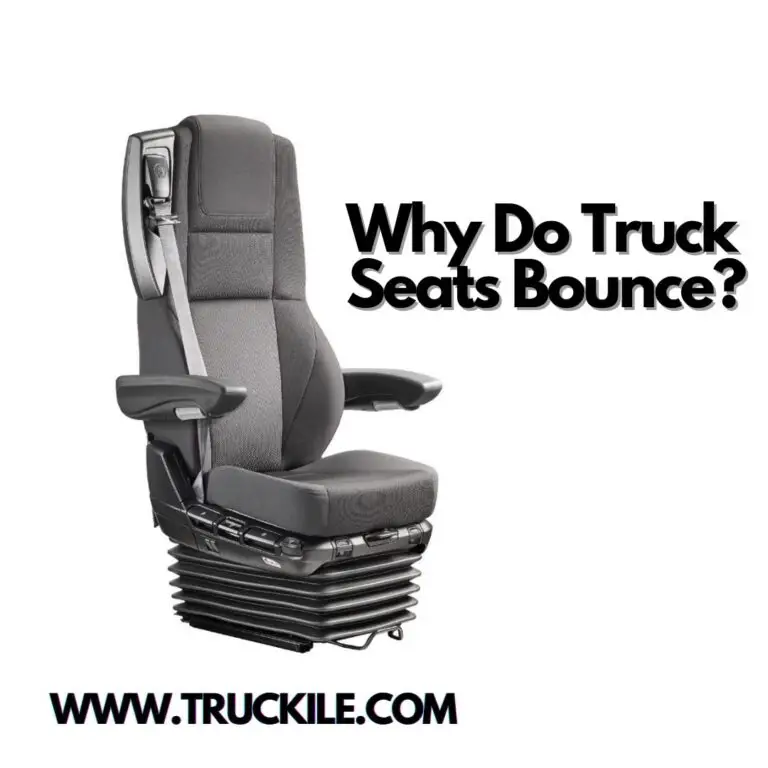Can A Rear Track Bar Cause Death Wobble?
The ‘death wobble‘ is a scary thing to experience in your vehicle. Many owners fear the ‘death wobble’ more than they do a head-on collision.
It’s due to this reason that, when people hear the diagnosis that death wobble is caused by rear suspension issues, some forego any rear track bar fixes and go straight for the steering stabilizer or even a steering stabilizing kit as their first line of defence for preventing death wobble.
So, let’s move on to look at can a rear track bar cause death wobble?
Can A Rear Track Bar Cause Death Wobble?
Not likely, but a rear track bar can cause some bad handling and riding characteristics, as well as wear on your tires.
Product Recommendation:
- SuperSteer® SS400 Rear Trac Bar Compatible with Ford
- JKS OGS151 Track Bar
- Dorman 524-621 Rear Suspension Track Bar Compatible with Select Models
Will A New Track Bar Fix Death Wobble?
Have you ever been driving your Jeep and all of a sudden, the steering wheel starts shaking? Sometimes it’s severe enough to where you’re fighting for control of the vehicle. If so, you’ve just experienced what is commonly referred to as “death wobble.” It’s a very common problem among Jeep owners, and it can be a dangerous situation.
The good news is that there are several things you can do to fix death wobble. The best way to do this is to try replacing the track bar. A track bar is the piece that connects your axle housing to the frame of your vehicle and keeps it in alignment.
This is one of the most important upgrades you can do if you have a lifted Jeep. Many aftermarket track bars, as well as the stock track bar, are completely ineffective in managing Death Wobble due to their “effective angle of operation”, particularly if you are above say 2 or 3 inches of lift.
What Will A Damaged Track Bar Cause?
The track bar, also known as a suspension link, is a crucial component of your vehicle’s steering and suspension system.
It works with the drag link to keep your wheels balanced and aligned, so it can be a huge problem if yours ever gets damaged. Here are some of the signs that you may need a new track bar.
1. The vehicle is difficult to steer or has excessive play in the steering wheel.
2. The vehicle pulls to one side while driving.
3. You feel an unusual vibration or shaking in the steering wheel, seat or floorboard when driving on straight, even roads at high speeds.
4. Your tires are wearing unevenly or prematurely wearing down on one side more than the other.
Do You Need An Alignment After Replacing Track Bar?
If you’re installing a fixed track bar, or a new steering stabilizer, and you don’t need an alignment after a track bar change, why bother replacing them? The answer is simple. If you have stock control arms, they are very narrow and they flex extremely easily.
The track bars they come with are highly likely to bend when this happens. After-market fixed track bars are much stronger and less likely to bend in a similar situation.
If you already have adjustable control arms, or if you want to be able to fine-tune the position of your axle side-to-side (for example, if it’s not sitting centered under the vehicle at ride height), adjustable track bars allow you to do so without having to replace your whole set of control arms.
The truth is that even though neither of these parts will affect the alignment settings on your truck, either one can make it possible for you to get closer to those settings—and that’s always a good thing.
That said, if you don’t have adjustable control arms and you’re not planning on getting any in the future, I’d recommend sticking with the stock track bar.
Can You Drive Without A Track Bar?
It is very dangerous to drive without a trackbar at all. NOTE: this excludes triangulated suspensions. You must be mistaking your track bar with your sway bar. Without a trackbar your front axle is going to track allover the road.
A sway bar, or anti-sway bar, is used to reduce body roll in a vehicle during fast cornering or over road irregularities. It connects opposite (left/right) wheels together through short lever arms linked by a torsion spring.
A track bar, also known as a panhard rod (or panhard bar), is a suspension link that provides lateral location of the axle. It is used on vehicles with a solid axle suspended by leaf springs, and can also be used for live axles such as those on trucks and tractors.
The track bar does not have any effect on roll stiffness; its purpose is to keep the axle centered under the vehicle rather than allowing it to shift from side to side.
While it previously was common for passenger cars with solid rear axles to have no track bars, it has become common practice to install them even on such vehicles; without one, even minor road irregularities can cause the rear end to shift sideways beneath the vehicle, which can result in instability.
What Does A Rear Suspension Track Bar Do?
The purpose of the trackbar is to control the left-to-right offset of the rear axle. The attachments at the left and right side of the trackbar allow for up and down motion, but not side-to-side motion. A trackbar has two mounting points – one on the frame and one on the rear-end housing.
The trackbar is designed to rotate. This allows it to keep its proper orientation as you accelerate and brake. It also allows it to move with the suspension as it cycles up and down through its travel range.
If you were to look at your rear suspension from underneath, you’ll see that there are a number of components that are fixed and don’t move, such as the leaf springs, shock absorbers, differential housing, etc.
There is also a link called a Panhard rod that runs across the width of the vehicle and is used to control the left-to-right offset of the rear axle while allowing it to cycle with the suspension.
How Do You Center Axle With Adjustable Track Bar?
In a friendly tone: You will have to measure the distance from the center of one tire to the other and then compare this distance to a set of factory measurements.
The measurements that you need are:
- Distance between tires at the front (when you turn your wheels straight)
- Distance between tires at the rear (when you turn your wheels straight)
- Distance between tires when they are turned all the way in either direction (left or right)
If you don’t have a measuring tape, use a piece of string or rope of known length and lay it across the front and rear axles. Mark where it touches each tire, then measure that distance on the ground with another piece of string or rope.
To make sure that your distances are accurate, it is best to do this with both sets of wheels facing forward and then again with them turned all the way in either direction.
Once you have all these measurements, compare them to factory specifications for your vehicle’s year/make/model (you can find these online). If any of them differ by more than 1/4 inch from factory numbers, you will have to adjust your track bar so that it centers your axle. This is usually done by loosening an adjustment bolt on the top side.
How Tight Should A Track Bar Be?
Always follow the instructions given by the manufacturer. Generally, the goal is to set your track bar as tight as possible without causing any damage to the threads or joints. If you don’t hear any creaking or squeaking noises when making a sharp turn, you’ve probably got it right.
Can A Rear Track Bar Cause Death Wobble – Conclusion
As a recap of the response we gave to the question, Can A Rear Track Bar Cause Death Wobble?
Not likely, but a rear track bar can cause some bad handling and riding characteristics, as well as wear on your tires.
Thanks for reading.

Joe lives and breathes cars and trucks. After many years working in the Auto industry, he decided that it is only right to share his knowledge with the public. As a qualified expert in trucks and cars, he started working for Truckile.com and is the main editor and publisher.






